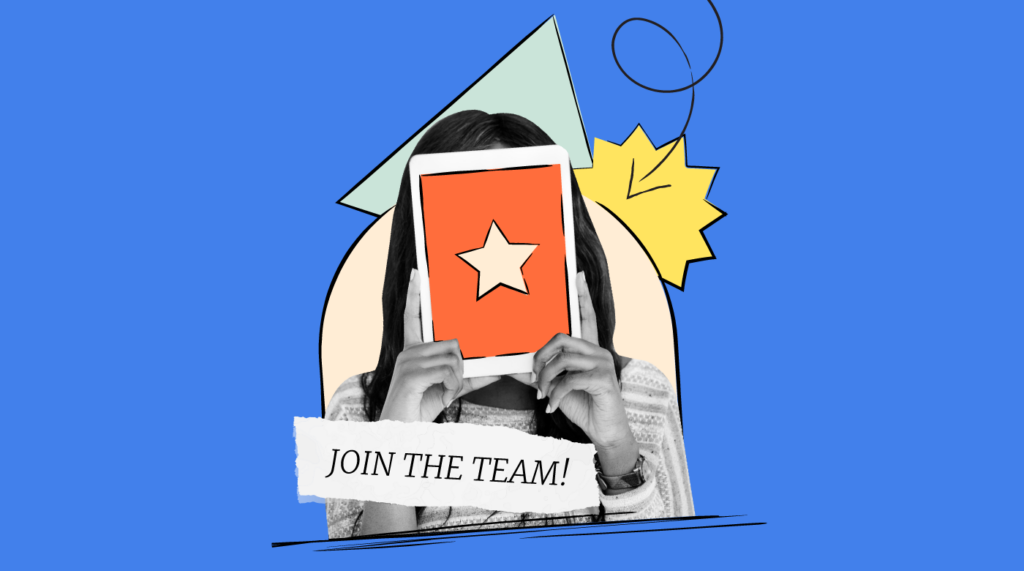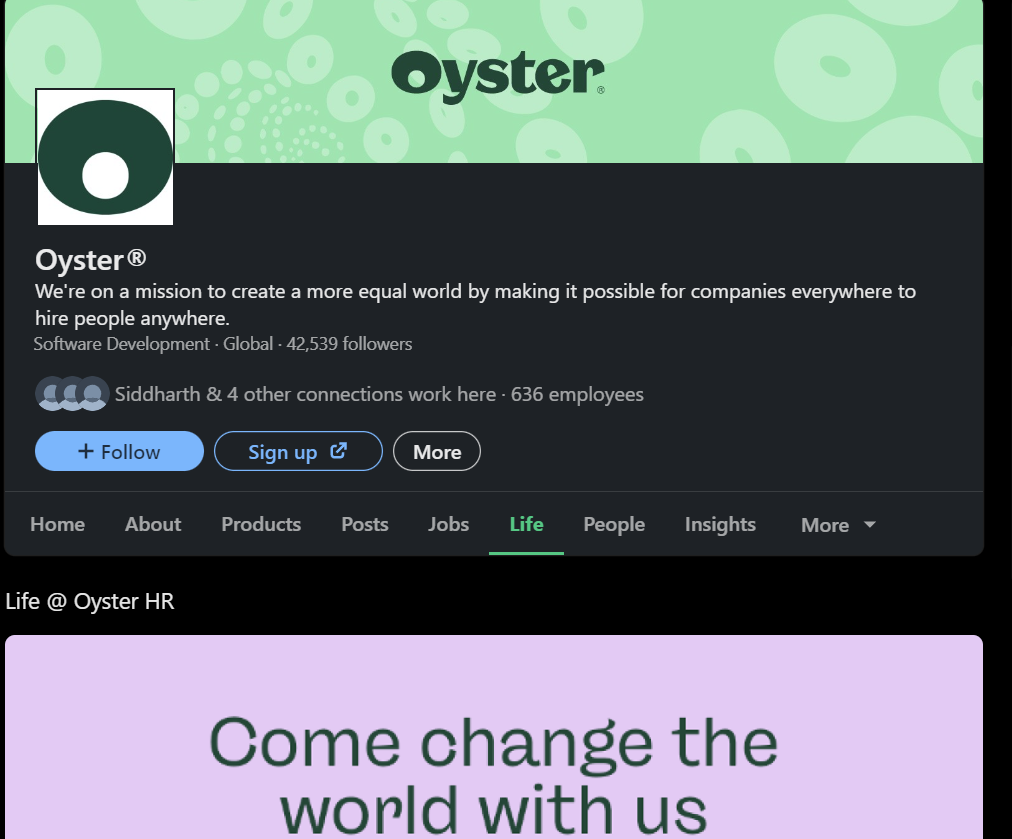You have your employer value proposition and employer brand, but how do you put all that out there and get people excited? This is where recruitment marketing comes in!
Recruitment marketing is under-utilised in many spaces, which is precisely why you have the opportunity to make a big splash regardless of how big or small you are.
Here's an opportunity for you to get creative with expressing your company identity, take candidates on a journey, and have a little fun!
Sprinkled throughout is advice on what to watch out for when you're putting yourself out there.
Let's dive in.
What is recruitment marketing?
Recruitment marketing, sometimes called talent marketing, is when you adapt traditional marketing strategies to attract and hire talent. It’s aimed at potential candidates to illustrate what your company does, who you are as an employer, and what working for you will look like.
In reality, recruitment marketing occurs everywhere regular marketing occurs because potential candidates are likely looking at what you’re putting out there that is aimed at clients.
However, there are certain channels that are more specifically aimed at job seekers that you should be taking full advantage of. That way you may find yourself attracting the best talent for you.
In the recruitment pipeline, recruitment marketing mostly makes a difference at the top of the funnel i.e. increasing brand awareness and enticing potential applications to apply.
That’s why it’s good to work with your general marketing team when creating your recruitment marketing strategy.
Further down the pipeline, recruitment marketing can still support you and your recruitment team to close candidates by providing them with more organic glimpses of what it’s like to work for your company. o make a real impact at the top of the recruitment funnel, consider integrating specialized recruiting software that aligns with your marketing channels.
Now I’ll take you through my favourite channels for reaching potential candidates.
Common Marketing Channels
Job adverts
It seems rather obvious, but job adverts are a form of recruitment marketing. This is why they have to be both informative and attention-grabbing—not an easy combination as the two are not necessarily compatible.
What I like to do is make sure that the job advert follows a logical flow and use headings to make it easy for candidates to know where to look for different kinds of information (e.g. “Responsibilities and Outcomes” and “About us”).
I also like to use the company values to structure the outcomes of the role (how their role contributed to your company’s mission) in a way that echoes those values as a signal that you truly do live what you preach.
For example, if one of your values is to “deliver great experiences for customers”, or something along those lines, that is something that everyone can contribute towards!
So, under responsibilities and outcomes in a job ad for engineers, you could include something like ”work with the product team in requirement gathering to truly understand what will move the needle towards an even better customer experience”.
It just gives a bit more flavour on what you’re requiring and why than just “requirement gathering”.
Another thing is to think carefully about where you’re posting. Do some research and think about where your target audience hangs out—perhaps there’s a jobs board or a jobs channel. e.g. if you’re looking for designers, check out Dribble (more on this later).
A note on funky job titles
Code whisperers, sales ninjas etc. They indeed sound interesting but think about whether they are discoverable.
If someone is looking for a job, would they look immediately for a “code whisperer” or a Software engineer as the first stop? Likely the latter and considering they will have applied to all the other roles with the more “regular” title they may not even look at the creative title at all.
I’m not looking to stifle your creativity—if anything you can mention it in the job description, but think of it as SEO—optimise the keywords that are more used to make sure you get more eyes on the job at least from the title.
After that, the creativity can shine through in the content of the job advert!
Outreach messages
Be it LinkedIn or other platforms, outreach messages also have to be treated as a form of marketing.
This will help you write more engaging messages rather than the cut-and-dry “job here”.
Again, make sure that your messages reflect your identity as an employer and guide potential candidates through the information you’re presenting to them.
I like to use Bitly or other link shorteners to also send a few links. You’re likely trying to reach top talent and they need information, but make sure your information is tailored to the person receiving it—especially the role being relevant.
Recently, I received a message offering me a position as a recruitment sourcer, despite being the Head of Talent and not having been a sourcer for at least 5 years at this point. Not a great candidate experience right out of the gate!
Every talent platform will tell you to personalise messages to increase response, but, if you’re sending many many messages a day (perhaps you are working on multiple roles at the same time like I usually am), that may not be possible.
So a quick tip from me is to separate your pool into a few categories e.g. Linkedin people who are “open to work”, or people from a specific background or company, and acknowledge the thing that made them unique in the message.
It still personalises it to them somewhat and you can more easily send a few messages concurrently.
Hiring platform profiles
Certain hiring platforms will work with you to create a page where featuring your company to potential candidates. Typically, they’ll allow videos, links, and mini-pages for all the information you want to highlight.
For a cost, LinkedIn allows you to create a so-called “Life” page, which is a space for you to show off life at your company.
It’s useful for providing more information to candidates, allowing them to organically discover information on the platform where they’re likely to apply for the role anyway.
If your budget can’t accommodate that yet, you can use your company’s LinkedIn homepage to post content aimed at candidates as well as clients.
Other platforms like Hired, SheCanCode, Cord, Haystack, and AngelList also allow you to create a page to show off your company.
Make sure to keep the page alive with relevant information and vary the content so it’s not just “here’s a new job” style posts.
It’s always a good idea to feature some sort of video or “employee highlight” featurette-style content so people can understand what day-to-day looks like for different roles.
While it’s great to hear from the leadership, for most of the really engaged candidates, you will find that information from regular team members would be more valuable to them.
Lastly, highlight your posts to your colleagues so they can share and react to your content. That way it can reach a wider audience including their own talent networks!
Social Media
Social media can be a powerful tool but only when used appropriately. Think about your company and your brand when choosing to invest time in a platform.
I don’t have a winning formula but, if you’re looking for pharma scientists on Instagram, for example, while not outside the realm of possibility it’s likely not the best use of your resources to run a dedicated recruitment marketing campaign there.
However, you can always have a “Life at [Company]” Instagram page—especially if you have a pet-friendly office. That always goes down well on the platform (pay your pet tax!).
X is a bit more universal, and it can be a place where you put out more general content about “life at [Company]” or job posts. In some industries, really outstanding candidates can be found actively participating in the conversations on X.
TikTok, the new kid on the block and popular with Gen Z, has some job posts for junior/entry-level roles, but it’s not proven territory yet.
There isn’t a lot of data or metrics available for actual conversion rates, however, it can be your space to show off your organization’s fun side.
The most cited metric out there is about how Chipotle increased their applicant pool by 7% when they started taking TikTok video resumes in their pilot program, however likely more time will be needed to generate more data.
Getting really niche, depending on the industry or roles, the right candidates may now be on federated versions of the above apps.
The “Fediverse”, as it’s now known, is a collection of open-source and self-hosted platforms that are being used as alternatives to X (Mastodon), Reddit (Lemmy).
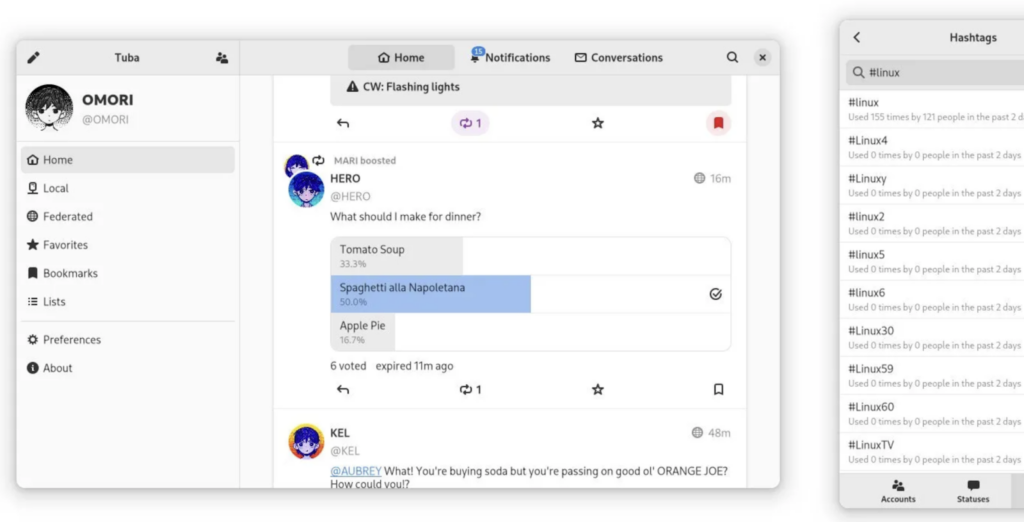
They operate like email i.e. we have a lot of providers of email but we can send emails to each other regardless of provider. It’s like being able to see Twitter replies inside of a Reddit post.
A lot of cyber security experts, for example, have moved towards these platforms after the shifts in X especially as they don’t want to be in a platform that is under the control of one person.
Regardless of your platform of choice here are some things to keep in mind:
- Keep in mind your candidate persona when choosing the best platform
- Research the most appropriate hashtags and trends and see which ones the talent community is using the most in their own posts or following.
- Make sure you understand any viral trends before you post something that shows you didn’t understand the context (example: look at Digiorno’s #WhyIStayed fiasco).
- See if it’s appropriate to work with influencers - again really industry-dependent but it can be a really effective marketing tactic for both brand and recruitment marketing.
Careers page—utilise your ATS
Careers pages are underutilised as a channel because not many companies take it seriously or actually update employees, but that is how you can stick out!
A study from LinkedIn found that your website is where candidates go the most to get information about your company, so it’s not just about having your job openings somewhere!
Separate out a space for candidates so they have their own journey—ideally a separate careers site that is easy to navigate to from the homepage.
Treat it like a source of leads and invite people to connect or become part of your talent pool. Some applicant tracking systems have a CRM attached to help you build a candidate database of talent that you can market yourself to.
The Twitch careers page is a good example:
I like the fact that they have well-maintained news and updates of programmes and employee highlights as well as the different career paths and what the interview process looks like.
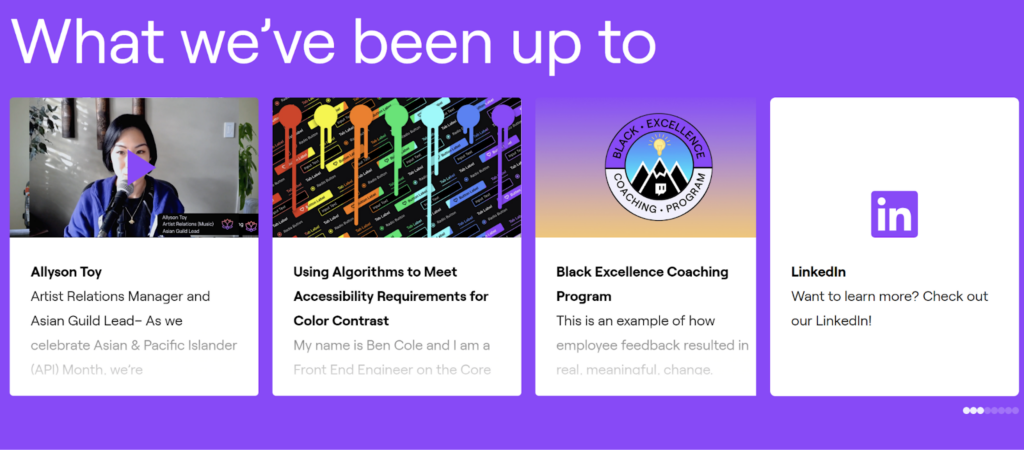
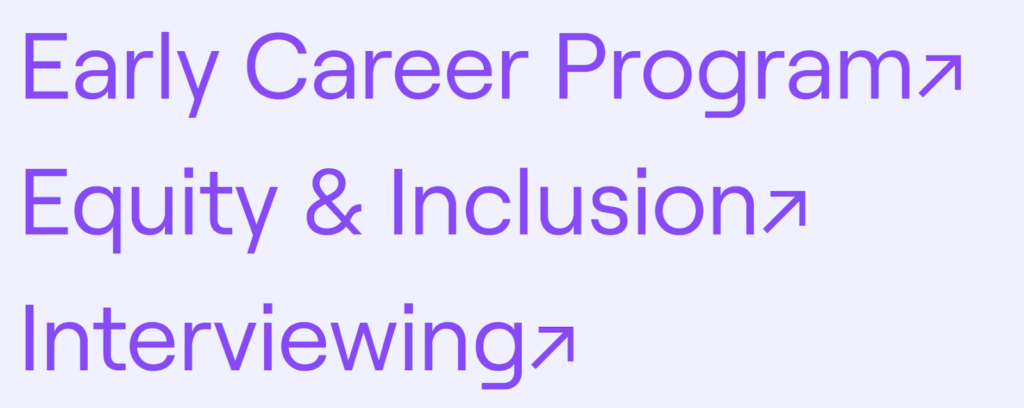
For more on creating an attractive careers page: How to Create An Attractive Careers Page to Get Better Applicants
Some Less Commonly Used Recruitment Marketing Tactics
Company ambassadors
A great way to extend the reach of your marketing efforts is to turn your employees into ambassadors for you as an employer.
Who is best placed than the people living the reality of working for you?

You can help your employees with how they present themselves on Linkedin—perhaps create a blurb for them to put as their job description.
You can also ask them to post roles or engage with social media posts from your company so their network sees it. Couple that with an employee referrals incentive programme and this can be a great talent acquisitions channel.
One thing I like to do is give everyone, either during onboarding or during workshops later, a bit of a primer on talking to anyone about the company as an employer. You never know when the opportunity to engage quality candidates may come up!
Review sites
It’s now standard process for candidates to look up a company on review sites like Glassdoor, Kununu, or Indeed before applying.
That’s why it is so surprising that companies still don’t see those as opportunities for a more active way of creating a recruitment marketing funnel from candidates who are already engaged enough to look up your company.
Instead, companies often see reviews and testimonials as something “that happens to them” rather than a place where they can increase candidate engagement by showing themselves as caring about the experiences of people in the company.
That’s why you need to make sure that you create and maintain a page where you monitor the feedback you receive.
When you’re first starting out building your profile, ask your current employees or candidates to give you a review about their employment experience or candidate journey.
Make sure you keep track of your scores there and respond appropriately to any critiques. Your score is certainly something you can feature to show your employee engagement and happiness! Glassdoor has a dynamic list of the best places to work; if you can get on there you’re golden.
Also, don’t underestimate the power of Trustpilot and review sites aimed at customers. One time I dropped out of an interview process at a Wellness App after seeing that their Google Play score is less than 2 stars.
Open source wiki/Notion
Depending on where your company is in your journey, you may not have an ATS or a careers page. A great alternative is to have an open-source wiki or publicly available employee handbook to give candidates more to explore.
You can either create a microsite or a page from your main site or use a tool like Notion, Obsidian, or Nuclino. Here are a few examples:
- Pento Home (notion.so)
- Welcome Human! - Handbook (hmn.md)
- Monito's Handbook [Public] (notion.site)
- Blendle's Employee Handbook (notion.so)
Wikis are especially useful for featuring information and being transparent with candidates from the get-go about things like your employee value proposition or your recruitment process. With Notion particularly, it’s also really easy to post pages with open roles as well.
Creating a wiki is a great fit for those companies that aren't at a stage where they have implemented an ATS that can easily manage a careers page, or companies that have a really well-developed culture that they’d like to show off more.
So this can either be a link on the main website that replaces a careers page, or it can be a link from within the careers page to “Learn more”.
Openness and transparency to candidates at the early stages of the funnel is becoming the norm, which is great to see.
If you are not sure where to start, check out OpenOrg—they’ve amassed a bunch of resources on where to get started with engaging qualified candidates and making your company not just a collection of open positions!
Recruitment Events
There are many recruitment events aimed at different candidate groups. For example, there are recruitment fairs for grads, start-ups, tech-specific roles, etc.
My recommendations when prepping for these are:
- Make sure you jump on and engage with any marketing content made by the organisers and advertise your attendance over social media or during chats with candidates.
- Prepare some fun swag!
- Come prepared with tech (iPad or laptop) in case people want to register to have a further chat with your company
- Ideally, have a few people at your stand—if you have a recruitment team make sure they’re there, but they also have people from the relevant audience. For example, if you are at a Women in Tech event, have at least one female engineer to chat with people.
- Make sure you follow up with attendees and add them to your talent pipeline to keep them updated.
Community Outreach
This is where I have found a lot of success, but only by following the rules.
Harking back to what I mentioned earlier about finding where your potential hires hang out, there are things like forums, Subreddits, and Discord or Slack communities where professionals of a specific area can gather, share ideas and discuss.
These are great sources of talented professionals who are engaged in their own domain and are looking to keep on top of new developments. Often those communities also have a jobs channel where you can post your roles.
One thing to note is to pay attention to the rules about joining. For example, some communities I reached out to ideally don’t want recruiters joining and it makes sense—if it’s a techie forum, recruiters dilute the pool.
Other times, as I discovered recently, I was able to join because the rule was that the forum was aimed at women only and all our techies at the time were guys.
If you’re not sure, reach out to the organisers and make sure you make yourself available to the community in which you want to take part.
Even if you're not a subject matter expert you can still be an active member and take part in their initiatives, so be prepared to give back.
Blogging, webinars, and other content marketing
There are other ways like webinars/blogs/Medium posts for you to put content out there specifically for recruitment, but I’d only recommend that if you have actually something to say. Don’t post for the sake of posting or to fill a quota.
Most companies use these spaces to educate clients on new product developments or as a source of getting clients, but a webinar or a blog can easily be just focused on your company as an employer.
One of my more successful posts was on the company blog page, where we usually posted about new product/industry developments.
One week I took over and wrote about how I created the recruitment process and why I did it the way I did it. Turns out job seekers really appreciate the demystifying of the hiring process at your company!
Be authentic
Whichever channel you choose, or whatever combination you want to go for, always make sure the content is authentic, appropriate, and attention-grabbing.
- You can make sure you are authentic by always thinking about your employer brand and identity.
- Appropriate by thinking about what are the target audience and personas.
- Attention-grabbing by making sure you do something to stand out from the pack in your own way.
It can be very easy to turn into those brands who post for the sake of posting or, even worse, try to be down with the kids in a space where they don’t fit in naturally.
Take a long hard look at yourself and think, do I want to be on Instagram or would I rather spend my precious time elsewhere?
Maybe Insta is your perfect platform or it’s not, the important thing is to not rush blindy in on the new “it” platform—think about where your ideal candidate persona hangs out.
Interestingly, enough the more niche the position the more the right channels will make themselves known pretty quickly.
Time to plan
As you can see above, there are a lot of channels to experiment with your recruitment marketing efforts, but that in itself doesn’t make an effective recruitment marketing strategy.
Just like in regular brand marketing, be ready to track performance, ROI (resource spent vs the increase of target candidates), and impact on recruitment strategy overall (e.g. is it taking away too much time from other essential tasks like screening).
This testing is really important to understand what works well in your own industry and location. From there, look to create a repeatable recruitment marketing plan that you can occasionally look to update with new developments and trends.
You have to figure out the right formula before you have the plan and even potential automations (like automated posts, updates to candidates in the CRM etc).
Have fun experimenting and optimizing for the best results!
Some further resources to help you with your recruitment endeavours:
- How to write a zinger job description
- 10 Best Recruitment Marketing Software For hiring staff
- The Key To Focused, Engaging Interviews (+ Template)
- Candidate Sourcing Tips To Help You Find The Best Talent
- How To Create A Great Candidate Experience (Even Through Rapid Scaling)
- 10 Key Recruiting Metrics To Focus On (And 12 Advanced)
- 10 Best Cloud Recruitment Software for Hiring Teams
- 5 Steps To Benefit From Your Own Returnship Program
- 9 Best Staffing Conferences to Help You Innovate in 2024
You can also find me over in the People Managing People Commmunity, a supportive community of HR and business leaders sharing knowledge to help you grow in your career and make greater impact in your org.

